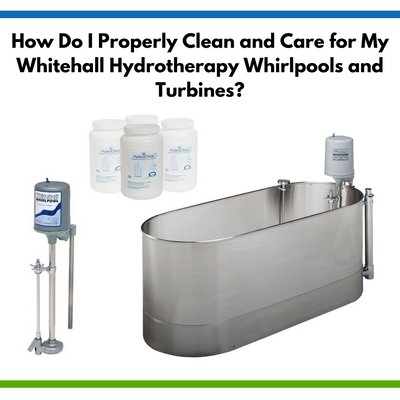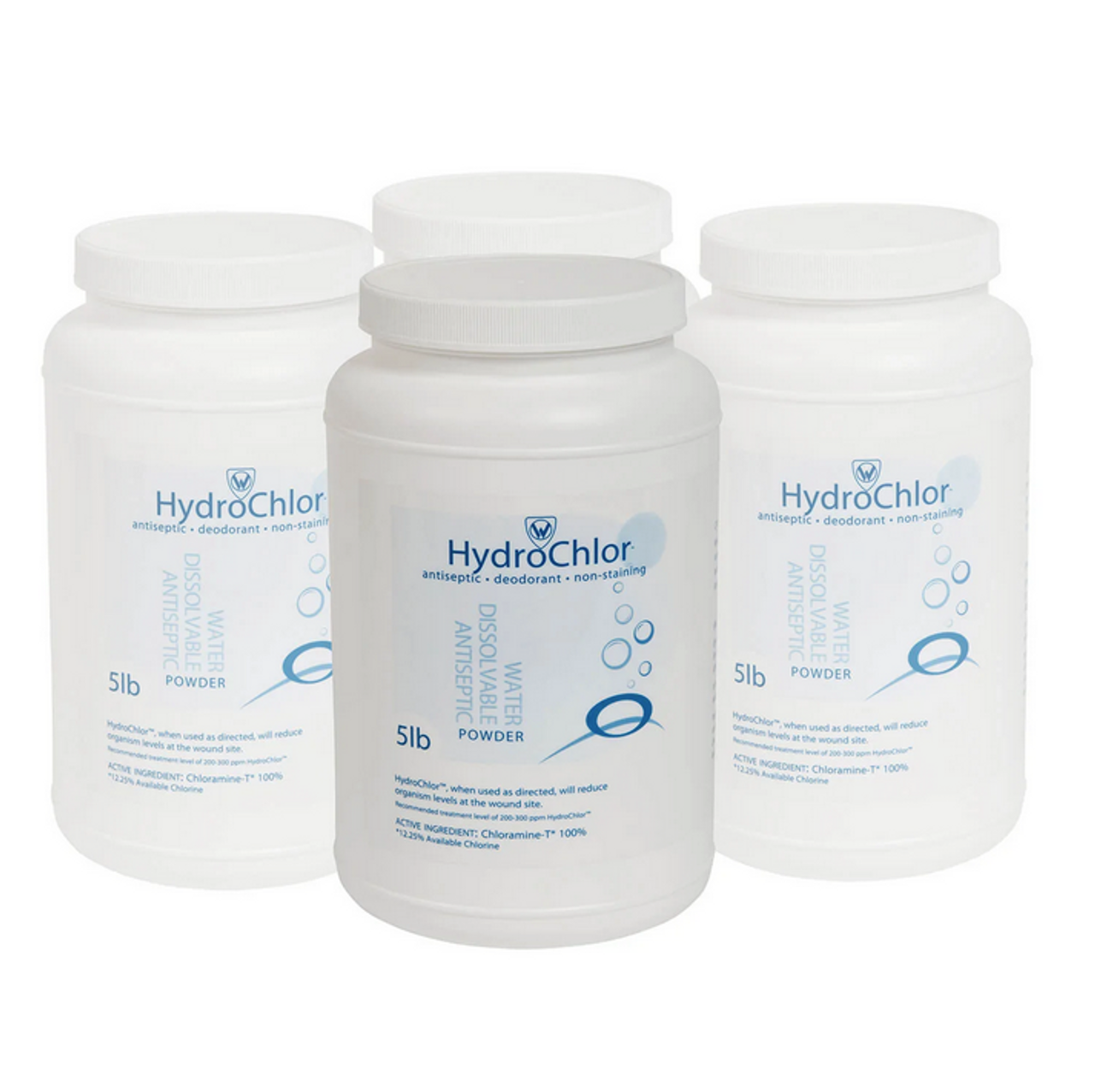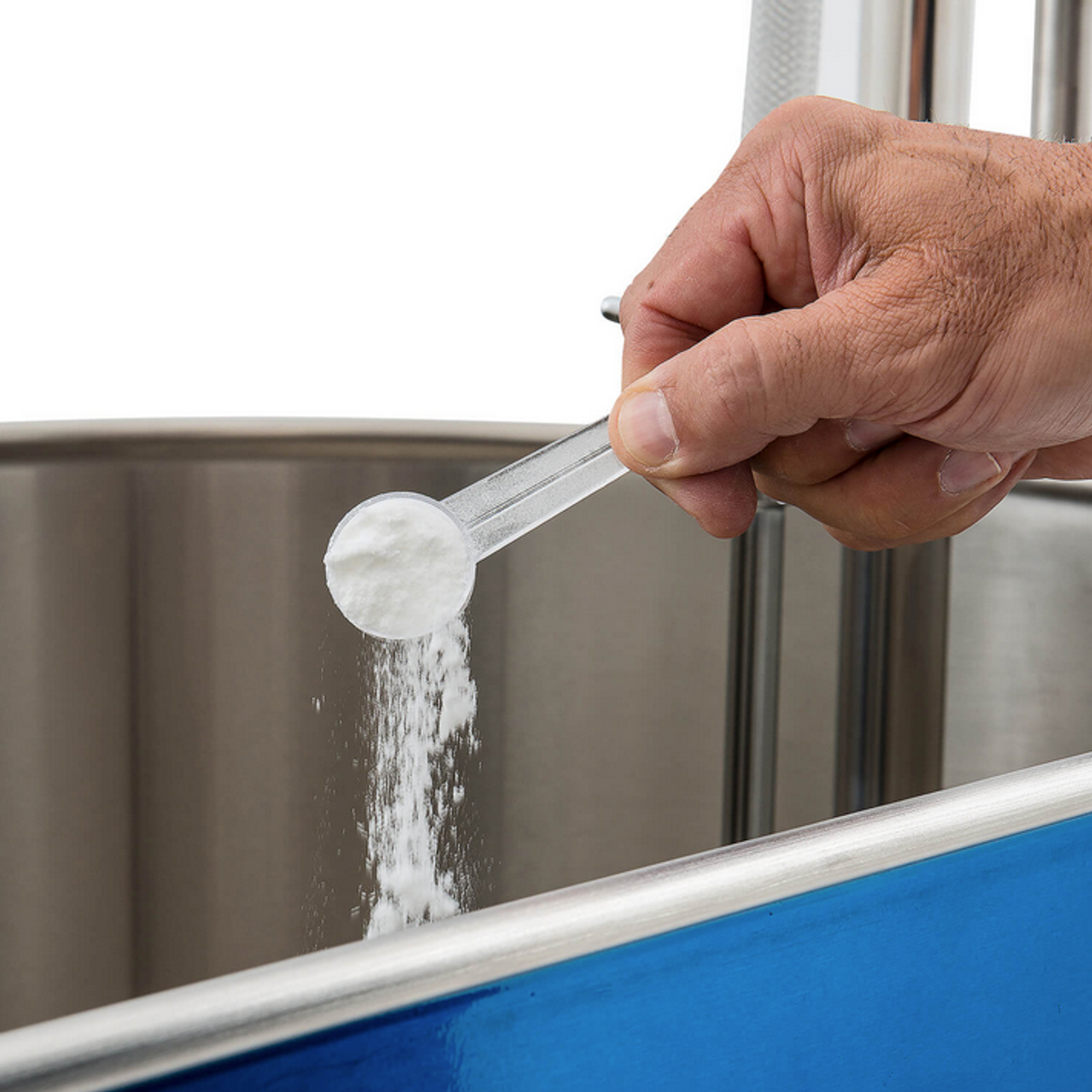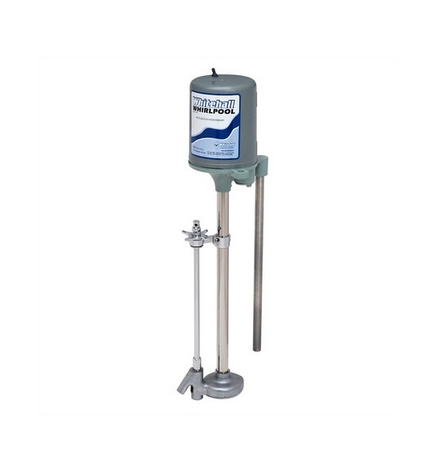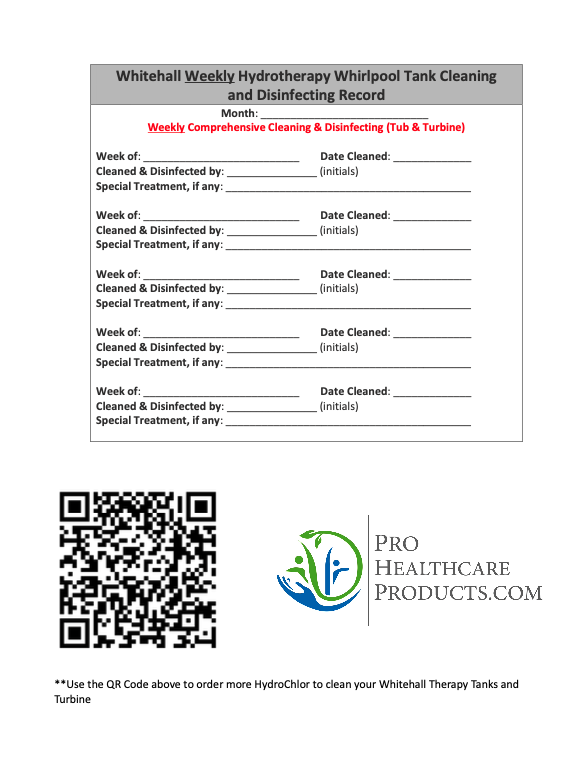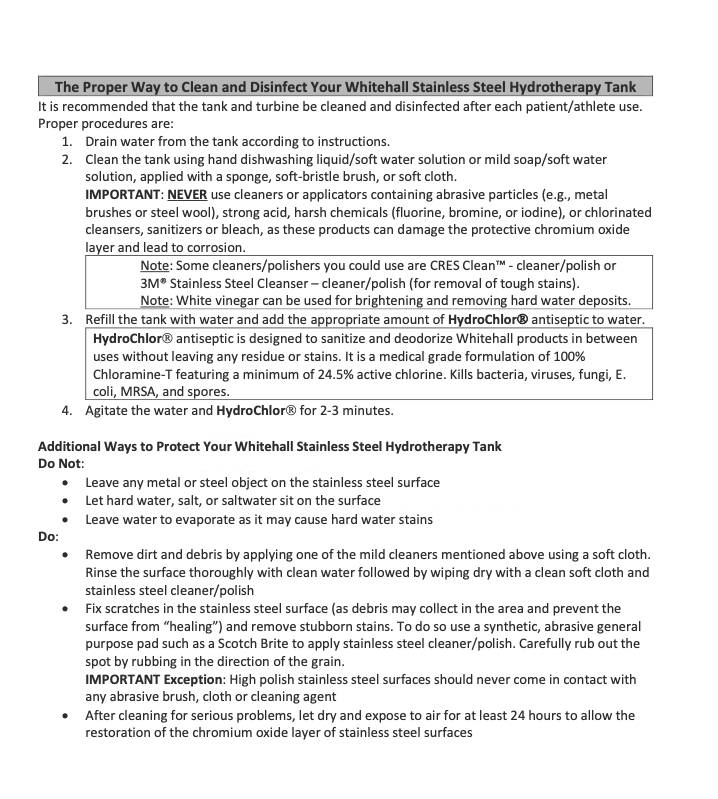 10th May 2023
10th May 2023
How Do I Properly Clean and Care for My Whitehall Hydrotherapy Whirlpools and Turbines?
|
Hydrotherapy is a popular form of rehabilitative therapy that involves the use of whirlpool turbine agitated waterto treat various conditions such as arthritic pain, skin lesions, burns, post-operative skin damage, etc. In the field of sports medicine, whirlpool therapy is an important therapeutic intervention in helping to reduce pain from muscle and connective tissue damage, and to speed recovery of activity induced muscle and connective tissue damage. Since hydrotherapy tanks are usually shared, there is a risk for the associated transmission of infection, and therefore the need for proper disinfection. |
|
First, it should be noted that stainless steel is not really stainless, but rather it is better described as being corrosion resistant, compliments of the high percentage of chromium present in the stainless steel. When exposed to oxidizing materials such as water, caustics, and air, it forms a thin impervious oxide layer that stops further corrosion. When a “stain” is properly cleaned and dried, the layer of chromium oxide will reform on its own in a few days. Consequently, if your hydrotherapy tank is not properly cleaned and cared for is when rust may take hold on the steel fixture.
The Proper Way to Clean and Disinfect Your Whitehall Stainless Steel Hydrotherapy Tank
|
|
It is recommended that the tank and turbine be cleaned and disinfected after each patient/athlete use. Proper procedures are: 1.Drain water from the tank according to instructions. 2.Clean the tank using hand dishwashing liquid/soft water solution or mild soap/soft water solution, applied with a sponge, soft-bristle brush, or soft cloth. IMPORTANT: NEVER use cleaners or applicators containing abrasive particles (e.g., metal brushes or steel wool), strong acid, harsh chemicals (fluorine, bromine, or iodine), or chlorinated cleansers, sanitizers or bleach, as these products can damage the protective chromium oxide layer and lead to corrosion. |
Note: Some cleaners/polishers you could use are CRES Clean™ - cleaner/polish or 3M® Stainless Steel Cleanser – cleaner/polish (for removal of tough stains).
Note: White vinegar can be used for brightening and removing hard water deposits.
3.Refill the tank with water and add the appropriate amount of HydroChlor antiseptic to water.
HydroChlor antiseptic is designed to sanitize and deodorize Whitehall products in between uses without leaving any residue or stains. It is a medical grade formulation of 100% Chloramine-T featuring a minimum of 24.5% active chlorine. Kills bacteria, viruses, fungi, E. coli, MRSA, and spores.
4.Agitate the water and HydroChlor for 2-3 minutes.
Aditional ways to Protect Your Whitehall Stainless Steel Hydrotherapy Tank
Do Not:
- Leave any metal or steel object on the stainless steel surface
- Let hard water, salt, or saltwater sit on the surface
- Leave water to evaporate as it may cause hard water stains
Do:
- Remove dirt and debris by applying one of the mild cleaners mentioned above using a soft cloth. Rinse the surface thoroughly with clean water followed by wiping dry with a clean soft cloth and stainless steel cleaner/polish
- Fix scratches in the stainless steel surface (as debris may collect in the area and prevent the surface from “healing”) and remove stubborn stains. To do so use a synthetic, abrasive general purpose pad such as a Scotch Brite to apply stainless steel cleaner/polish. Carefully rub out the spot by rubbing in the direction of the grain.
- IMPORTANT Exception: High polish stainless steel surfaces should never come in contact with any abrasive brush, cloth or cleaning agent
- After cleaning for serious problems, let dry and expose to air for at least 24 hours to allow the restoration of the chromium oxide layer of stainless steel surfaces
The Proper Way to Clean and Disinfect Your Whitehall Turbine
|
|
Need more HydroChlor for your Therapy Tank? Click HERE.
A Brief History of the Origins of Disinfection and Sterilization in Healthcare Facilities
Over three decades ago a rational approach to cleaning, disinfection and sterilization of patient-care items and equipment was developed by Earle H. Spalding. His categorization of patient-care items and equipment into Critical Items, Semicritical Items , and Noncritical items for the purpose of planning methods for disinfection and sterilization procedures and protocols has stood the test of time. It is used by infection control professionals continues today with few refinements having been made to the original guidelines.
Critical Items: These items are those that confer a high risk for infection if they are contaminated with any microorganisms and are objects that enter sterile tissue or the vascular system.
- Includes surgical instruments, cardiac and urinary catheters, implants, and ultrasound probes used in sterile body cavities.
Semicritical Items: These items are those that come in contact with mucous membranes and nonintact skin and should be free from all microorganisms in or on an instrument, except for small numbers of bacterial spores, and minimally require high-level disinfection using chemical disinfectants.
- Includes respiratory and anesthesia equipment, some endoscopes, laryngoscope blades, esophageal manometry proves, cystoscopes, anorectal manometry catheters, and diaphragm fitting rings.
Noncritical Items: These items are those that come in contact with intact skin but not mucous membranes. The intact skin acts as an effective barrier to most organisms and therefore the sterility of items coming in contact with intact skin is not critical. This guideline divides the noncritical items into patient care items and environmental surfaces.
- Noncritical patient care items include bedpans, blood pressure cuffs, crutches, and computers.
- Noncritical environmental surfaces include bed rails, some food utensils, bedside tables, patient furniture and floors and Hydrotherapy tanks. These items are to be disinfected with intermediate-level disinfectants (i.e., phenolic, iodophor, alcohol, chlorine).
Note: Since hydrotherapy tanks have been associated with spread of infection, some facilities have chosen to disinfect them with recommended levels of chlorine.
Reference:https://www.cdc.gov/infectioncontrol/guidelines/disinfection/rational-approach.html
Downloadable Resources:
1- Download and Print your Weekly Hydrotherapy Whirlpool Cleaning and Disinfecting Record Sheet
2- Download, print and post the step by step guidelines to properly clean and disinfect your Whitehall Therapy Tank and Turbine. Post the sheet near the Therapy Tank for easy access (Laminate it after printing)
Click Image to Download:





